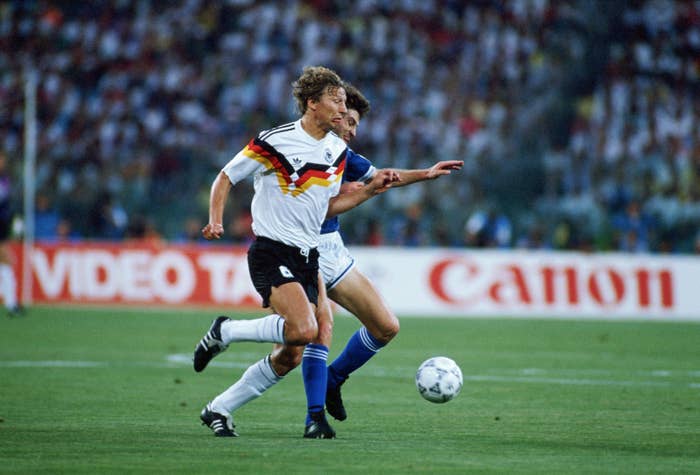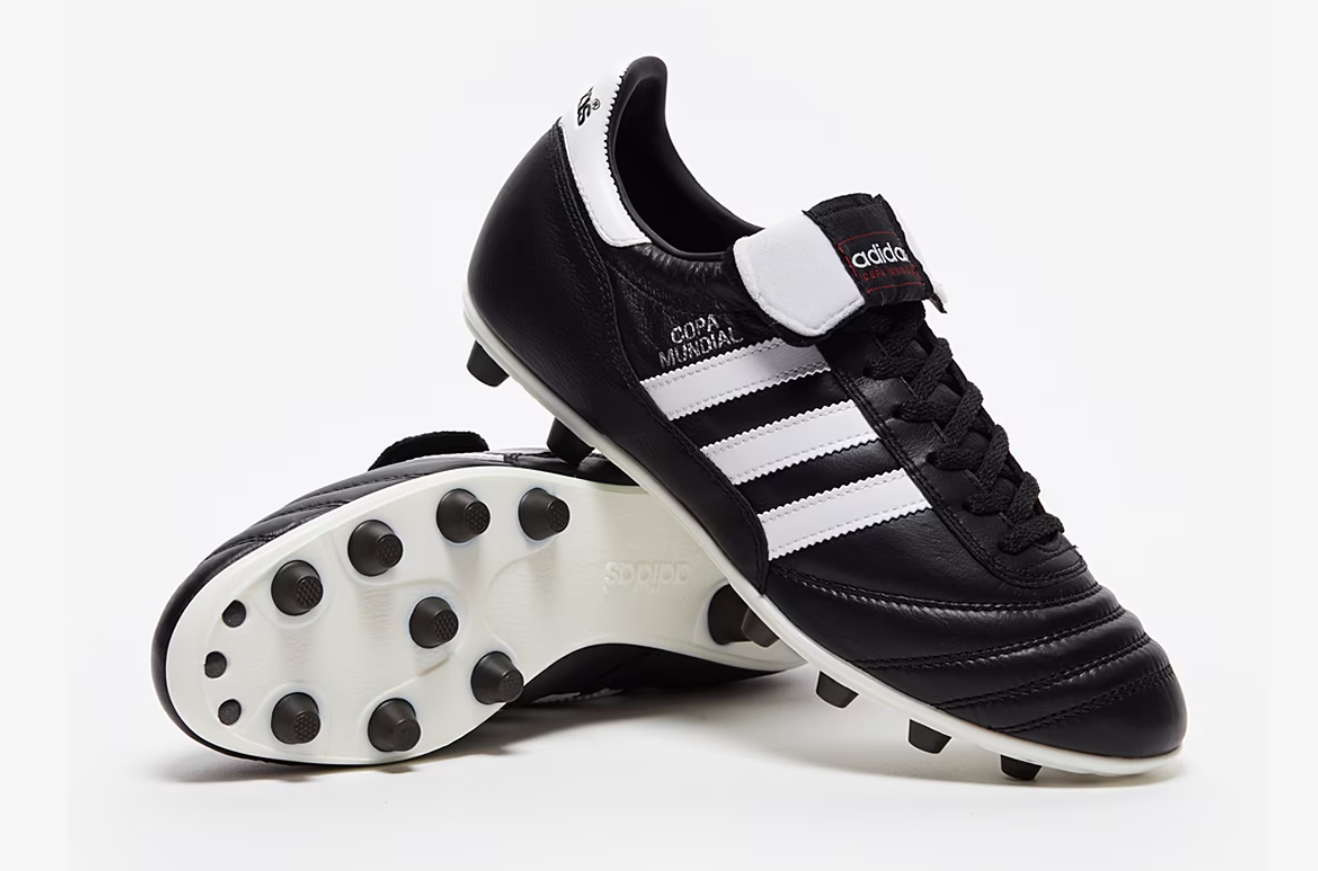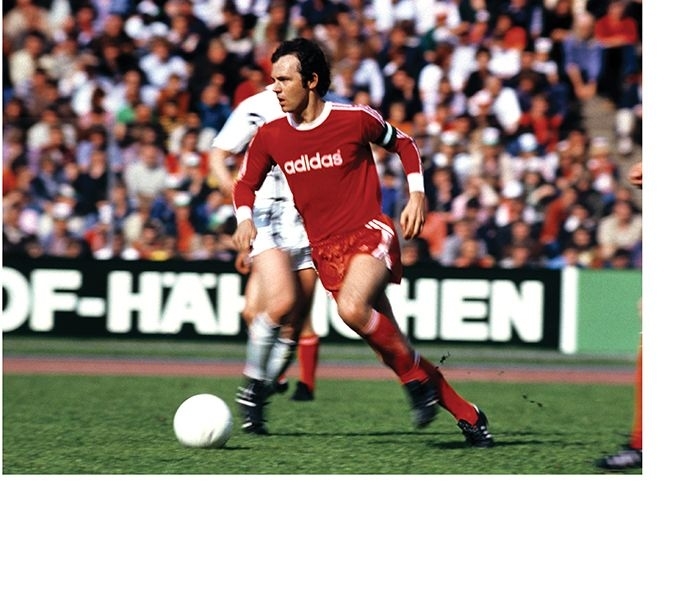
Excuse me, officer, I’d like to report a robbery. This past week, the unthinkable happened. The German national football team, which has been sponsored by Adidas for 77 years, will be wearing the Nike Swoosh on its uniforms come 2027. Nike took Germany from Adidas, signing the team to a massive endorsement deal.
This might be the biggest betrayal in the sportswear industry ever. Germany leaving Adidas is like if Michael Jordan just now ended his Nike partnership and signed with Adidas. Or if the University of Oregon left Nike for the Three Stripes. It’s not something you’d ever expect to happen. And if it did, the public would think that at best there was a falling out between the two entities, and at worst that something nefarious took place.
Before we get into the history, and what this all means, let’s break down the facts. According to a report last week from Optus Sport, a publication out of Austria, Nike is paying 100 million euros for the contract, which is double the 50 million euros Adidas was paying.
“We understand every emotion,” said the DFB, the German association that runs the national team, in a statement on X. “It is also a drastic event for us as an association when it becomes clear that a partnership that was and is characterized by many special moments is coming to an end after more than 70 years. That doesn't leave us cold.”
The DFB went on to say that going with Nike over Adidas wasn’t just a decision to line the pockets of the national team, but to help the overall state of football in the country. The DFB doesn’t just look over the national team, but football through all the ranks of Germany, from youth development up.
“The DFB has a unique selling point: It is a sports association that finances its member associations and the amateur base and is not financed by them,” the association said. “It puts the money into football. So that football remains a popular sport. Against this background, the DFB has to make economic decisions. Nike made by far the best financial offer in the transparent and non-discriminatory tender process.”
So how is the news of the German coup going over at the respective brands? At Adidas, the news came in a more somber tone. The brand’s CEO, Bjorn Gulden, a former footballer himself, seemed to be taking it in stride. He did make a social media post on March 21, the day the news broke, where he called it a mixed day and tagged Adidas Football in his Instagram story—not a clear reference to Adidas losing Germany, but definitely a reflection of how he felt that day. In a more straightforward statement, he posted on Instagram while wearing a German football top, writing: “Good luck today Germany! Regardless what happens in 2027… we are 100% behind the team! We are fans and you are family! You will have a fantastic time at Homeground during the Euro and we will be a fantastic host for you!”
The news over at Nike was met with jubilation, which could have been expected.
“The world got a great reminder of that today, with the announcement of the awarding of the German football contract,” said Nike CEO John Donahoe on an investor call last week. “I was fortunate to be in Germany for our pitch earlier this week, and I can tell you it was simply Nike at its very best.”
The statement from Donahoe is what you’d expect from a CEO that landed a contract. While I don’t doubt that he wants to show ultimate confidence in his brand, it also comes across as dishonest to me.
“It was a remarkable team effort and a great proof point that when Nike brings out our best, no one can beat us,” Donahoe said.
What best are you and Nike bringing out, John Donahoe? Did you have a design-off presentation to win the contract? I doubt it. Spending two times the amount of money isn’t “showing Nike at its best.” I know people will view me as a person with more affinity for Adidas than Nike. And that’s true. But I’m not a huge champion of Gulden or supporter of Germany. It feels like a weird manipulation of the situation to say that Germany went with Nike because they were going to make better things. It feels more about the money. And it’s OK to just say that.
77 years is a long time for one company to sponsor one team, but you have to look at it deeper than just decades spent providing sports gear. Adidas and the German national team, or football in Germany as a whole, are inextricably linked.
Their greatest achievements can be linked to one another on and off the pitch. The Adidas Samba first released in 1949 and was created for German footballers to wear on icy pitches during the winter. The shoe was later packaged and released in 1950 for the World Cup in Brazil, where it was given the Samba name. The Samba is the brand’s longest running shoe and the second best seller of all time, next to the Stan Smith, and has had a resurgence in popularity over the past couple years.

But when it comes to the German national team’s connection to Adidas, little compares to the folklore of the Adilette slide. Legend has it that in the 1960s, the team approached Adidas founder Adi Dassler with the request to create a piece of footwear to help prevent them from contracting athlete’s foot in the shower. The result was the Adilette slide, which is undoubtedly the best slide of all time.
While not made solely for the Germans, the Adidas Copa Mundial, the most iconic, best selling football boot of all time, was worn by the West German team for the 1982 World Cup final, where they lost to Italy. The boot is still made in Germany at the brand’s factory in Scheinfeld. Adidas is even selling a pair of the boots that are white with the stripes in the German black, red, and orange. There was also a 2007 pair of the boots that came with a postcard of the 1982 German team.
Franz Beckenbauer, one of the most famous footballers of all time and the best German player ever, is one of the most important Adidas athletes to ever sign to the brand. Not only did he bring the brand prestige on the World Cup stage, winning the tournament with West Germany in 1974, but he’s also the namesake behind the brand’s original tracksuit. Adidas also made Beckenbauer a sneaker, the Beckenbauer Allround.

It almost goes without saying, but the football shirts that Adidas has made for West Germany and Germany (the country reunified in 1990 after the fall of the Berlin Wall) over the years are some of the best of all time. The white shirts from the ‘70s and the ‘80s tops with the Three Stripes down the shoulders. The late ’80s and ’90s shirts that were deconstructed takes on the German flag—all so good.
The breakup between Adidas and Germany’s national team sent ripples through German society. Politicians are not happy.
“I can hardly imagine the German jersey without the Three Stripes,” said economy minister Robert Habec. “For me, Adidas and black-red-gold always belonged together. A piece of German identity."
I found this out in 2016 when I interviewed German football superstar Jerome Boateng, who played for Germany and Bayern Munich, Germany’s two biggest football entities, both sponsored by Adidas.
“At Bayern, sure, it’s all about Adidas, and that’s not a problem for me,” said Boateng, a Nike athlete. “I can’t change it. That’s Bayern.”
It was just unspoken that Bayern Munich was, basically, part of Adidas. And that would never change. I imagine many thought the same for Germany, but here we are.

